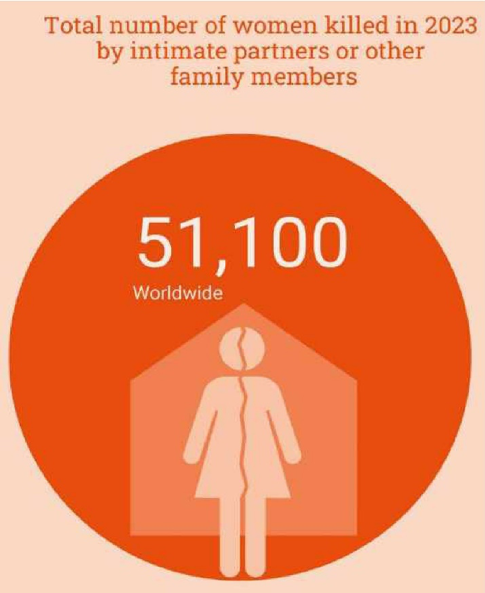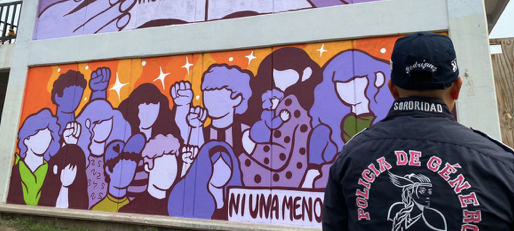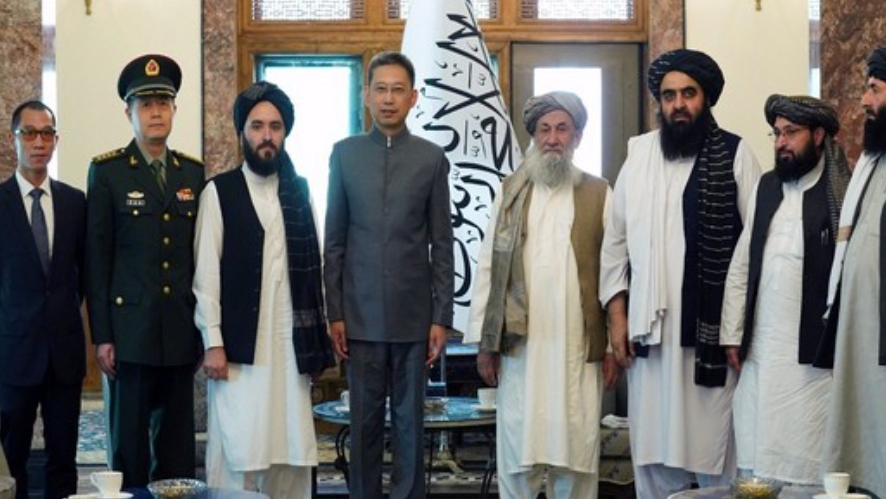Blog Special: Femicide as a Global Scourge: A Challenge for International Law
- SIS Blog

- Dec 20, 2024
- 9 min read
Updated: Jan 12

By Prof. (Dr.) Bharat H. Desai
On December 05, 2024, celebrated Mexican activist Norma Andrade, was at the UN Office in Geneva to raise awareness about femicide. She knew what it exactly means since her own daughter, Lilia Alejandra, was murdered in that same city in 2001. Her words “we are worth a peanut…a woman is just disposable,” pithily reflect the new global scourge – femicide – that has afflicted societies. As per the available figures, some 2526 women were murdered and hundreds disappeared in Mexico’s Ciudad Juarez during 1993 to 2023. Andrade, raised her voice against organized femicide against women in Mexico. “In Mexico, the growing number of disappearances is real, but this boom in organized crime and drug trafficking has erased what is happening to women, not that it stopped happening, but it is becoming invisible”, Andrade said.

Femicide as a New Scourge
The term “femicide” is used to refer to all types of gender-related killings of women and girls as described in the “Statistical framework for measuring the gender-related killing of women and girls (also referred to as “femicide/ feminicide”)”. It is developed by UN Office on Drugs and Crimes (UNODC) and UN Women and approved by the United Nations Statistical Commission in March 2022. In the emerging scenario, vast majority of male homicides take place outside the domestic sphere. However, home has become the “most dangerous place for women and girls”. As per the 2024 report published by the UNODC, the contrast is stark: as compared to 11.8% killings of male, 60.2% women were killed in 2023 by their intimate partners (45%) or other family members (55%).

The number of killings by family members and intimate partners – the most common manifestation of femicide – remains at staggering levels globally. The UNODC report, on the basis of studies carried out in 2023 show that some 51,100 (as compared to 48, 800 in 2022) women and girls were killed at home, out of 85,000 (89, 000 in 2022) women and girls killed intentionally by their intimate partners or other family members. Thus, femicides account for 60 per cent of all female killings globally. In other words, an average of 140 women and girls worldwide lost their lives every day at the hands of their partner or a close relative. In many of the cases, the victims had previously reported violence. Hence, their killings could have been prevented.
Gender based violence is a global challenge (Author: The Tribune, November 02, 2021). However, the gender related killings of women are reflection of deeply entrenched hatred and sadistic mindsets that assume “most brutal and extreme manifestation of violence against women and girls” (UN Women; November 25, 2024). Femicide differs from other forms of homicides or murders wherein there is an explicit mens rea (intention) to kill a female solely on the basis of her gender. In order to eliminate the root cause of femicide, the regulatory processes could trace the genesis and symptoms at home, in workplaces, schools or public spaces, including intimate partner violence, sexual harassment and other forms of sexual violence, harmful practices and trafficking.

As a new global menace, femicide transcends borders, socio-economic status and cultures, but its severity varies from region to region and country to country. For instance, Africa recorded the highest rates of intimate partner and family-related femicides, with 21,700 women killed in 2023, followed by Asia (18,500), Americas (8,300) and Europe (2,300) and Oceania (300). In Europe, 64 per cent of victims were killed by their intimate partners; in the Americas, it was 58 per cent. In contrast, women in Africa and Asia were more likely to be killed by family members than by their partners. This is a graphic reality of the alarming rise in new global scourge witnessed around the world. The challenge remains as to how to end violence against women and girls and achieve justice for every victim. It calls for an end to the culture of impunity and holding the perpetrators accountable amidst challenges of non-reporting of killings, societal cultures and weak justice delivery mechanisms. The organs of the UN such as UNODC and UN Women face heavy odds in their efforts to collate statistics and spread of awareness.
The Normative Framework
The genesis of the social-patriarchal construct of uneven position and treatment of women goes back to time immemorial. However, there has been organized efforts, struggles and processes as well as crafting of instruments and structures to attain the truism in various spheres of life that a woman is as much human as man. In the post-UN Charter (1945) era, the first breakthrough was brought about by the pioneering magna carta (International Bill of Human Rights) – Universal Declaration of Human Rights (UDHR) adopted by the United Nations General Assembly (UNGA) through its resolution 217 (III) of December 10, 1948. A feisty Indian woman delegate, Hansa Mehta, is widely credited for bringing about sanity and balance in the drafting process to replace the word ‘men’ by ‘human beings’. Hence the UDHR emphatically declares: “All human beings are born free and equal in dignity and rights” (Article 1). It became a historic milestone of normative equality between men and women. However, it took 30 more years to address the simmering issue of discrimination against women when the UNGA again took the initiative to adopt Convention on the Elimination of All Forms of Discrimination Against Women (CEDAW) through the instrumentality of its resolution 34/180 of December 18, 1979.

In defining the discrimination against women”, CEDAW has identified “any distinction, exclusion or restriction made on the basis of sex” (Article 1). The primary thrust of CEDAW comprises elimination of discrimination and restoring equality in three spheres: (i) civil rights and the legal status of women (ii) dimensions of human reproduction and (iii) impact of cultural or traditional factors on gender relations. Yet CEDAW refrained from addressing the crucial challenge of violence faced by women around the world. Therefore, 1979 CEDAW’s thrust on “elimination” was sought to supplemented by the UNGA through a special resolution 48/104 of December 20, 1993. It brought into being Declaration on the Elimination of Violence against Women. In defining the phrase "violence against women", the Declaration brought into vogue a new global parlance of “any act of gender-based violence” (Article 1). As a corollary, the 1993 UNGA Declaration sought to establish an umbilical link with 1997 CEDAW in these words: “effective implementation of the Convention on the Elimination of All Forms of Discrimination against Women would contribute to the elimination of violence against women and that the Declaration on the Elimination of Violence against Women, set forth in the present resolution, will strengthen and complement that process”. It aimed to fill up the gap on violence left out in CEDAW. Though adopted through a recommendatory UNGA resolution, the 1993 Declaration can be said to have higher normative value as it is the only global instrument that squarely addresses the endemic scourge of violence against women. It enshrined the broad contours of violence against women (Article 2) to include the following:
(a) Physical, sexual and psychological violence occurring in the family, including battering, sexual abuse of female children in the household, dowry-related violence, marital rape, female genital mutilation and other traditional practices harmful to women, non-spousal violence and violence related to exploitation;(b) Physical, sexual and psychological violence occurring within the general community, including rape, sexual abuse, sexual harassment and intimidation at work, in educational institutions and elsewhere, trafficking in women and forced prostitution;(c) Physical, sexual and psychological violence perpetrated or condoned by the State, wherever it occurs.
It is significant that the Declaration places onus on the States in taking violence against women seriously and enjoins upon them to “condemn violence against women and should not invoke any custom, tradition or religious consideration to avoid their obligations with respect to its elimination.” The call to adopt “all appropriate means and without delay a policy of eliminating violence against women” can be construed as leaving primary thrust of action to the domestic policies, legislations and enforcement organs for elimination of all forms of violence against women. As a result, it places the 1993 Declaration in the same league as the 1997 Convention (CEDAW). It came as a logical corollary for the UNGA, in view of the global trend of violence against women and girls, to take further initiative through resolution 54/134 of December 17, 1999 to designate November 25 every year as the International Day for the Elimination of Violence against Women. The UNGA recognized the graphic global reality of inequality, discrimination and violence against women and sought to bring together the UN system-wide efforts in conjunction with the efforts by the sovereign states and civil society and NGOs. It was on the recognition of the concrete premise that “violence against women is a manifestation of historically unequal power relations between men and women, which have led to domination over and discrimination against women by men and to the prevention of their full advancement, and that violence against women is one of the crucial social mechanisms by which women are forced into subordinate positions, compared with men” (Preamble, paragraph 6). This forms the basis for continuation of a process to take step-by-step concerted measures, in view of the ground realities in different countries, for the elimination of all forms of violence against women.

At the regional level, only directly applicable instrument remains the 1994 Inter-American Convention on the Prevention, Punishment and Eradication of Violence Against Women. The Convention was adopted at Belem Do Para (Brazil) on September 06, 1994 by 34 States at the 24th regular session of the General Assembly to the Organization of American States (OAS). It entered into force on May 03, 1995. The OAS Convention, adopted after the 1993 UNGA Declaration, has defined violence against women as “any act or conduct based on gender that causes death or physical, sexual or psychological harm or suffering to women, whether in the public or the private sphere” (Article 1). Significantly, in outlining the scope of the Convention, it has imbibed the spirit of the 1993 UNGA Declaration (Article 2). In laying down the duties of the States Parties, the Convention has created Inter-American Commission of Women to which the Parties will provide national reports on “measures adopted to prevent and prohibit violence against women, and to assist women affected by violence, as well as on any difficulties they observe in applying those measures, and the factors that contribute to violence against women” (Article 10). Notwithstanding this OAS Convention, its efficacy has come under question in view of rising tide of femicide in Americas as reflected in 8, 300 killings of women and girls (2023). The consistently higher rate of intimate partner/family member femicide is more worrisome in Central America than in the other parts of the region.
A Challenge for International Law
Femicide requires multifaceted approaches to attain the aspirational goal of “elimination” of violence against women and girls. The prevalence of such violence against women and girls in the third decade of the 21st century presents a challenge for International Law, international institutions and the global scholarly community. As underscored in this author’s treatise Sexual and Gender Based Violence in International Law (Springer: English 2022; German 2023) “the control over female sexuality remains central to the social, cultural, and State-driven global normative systems”. It appears to be an important contributing factor in the rising global scourge of femicide prevalent in all the societies. The above scholarly work has alluded to working out processes for de-legitimization of SGBV. It would also help as an important approach to ensure elimination of femicide in the foreseeable future.
As explained in the discussion on “normative framework”, it is the UNGA that has put into place resolutions and declarations that have propounded fundamental human rights of women and girls in general and inequality, discrimination and violence against them in particular. The only UNGA mandated global instrument (1997 CEDAW) per se does not address any form of violence against women even though all forms of discrimination against women constitute a major factor that contribute to brutal violence (femicide) against women and girls. Therefore, it is high time that the UNGA, as a plenary organ of the UN, sets in motion a negotiating process at the earliest for a special global Convention on the Elimination of Sexual and Gender Based Violence Against Women that can be adopted as annexure to a special resolution thereon.
This is an Original Contribution to the SIS Blog.
Prof. (Dr.) Bharat H. Desai is (former) Chairperson and Professor of International Law at the Centre for International Legal Studies (SIS, JNU), who served as a member of the Official Indian Delegations to various multilateral negotiations (2002-2008), initiated and coordinated the futuristic knowledge initiatives for the SIS Faculty Wall of Honor (2023-24), the Inter-University Consortium: JNU; Jammu; Kashmir; Sikkim (2012-2020) and the Making SIS Visible (2008-2013) as well as contributes as the Editor-in-Chief of Environmental Policy and Law (IOS Press: Amsterdam).







